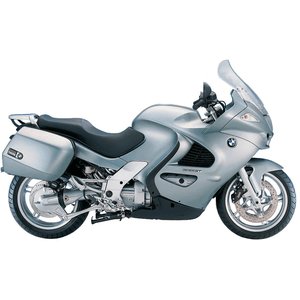BMW K 1200 GT (2003–2005): A Timeless Sport Tourer for the Discerning Rider
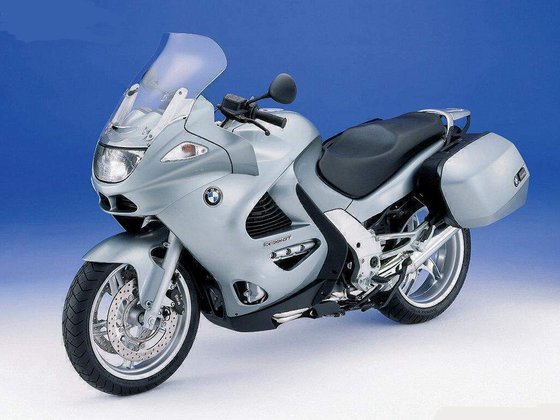
Introduction
The BMW K 1200 GT, produced between 2003 and 2005, remains a benchmark in the sport-touring segment. Designed to blend long-distance comfort with sporty dynamics, this machine embodies BMW’s engineering philosophy of innovation, reliability, and rider-focused ergonomics. Even by modern standards, the K 1200 GT holds its own as a capable tourer with a distinctive character. Having spent time in the saddle of this Bavarian workhorse, it’s clear why it still commands respect among enthusiasts who value substance over fleeting trends.
Engine & Performance
At the heart of the K 1200 GT lies a 1,171 cc liquid-cooled inline-four engine, delivering 128.7 HP (94 kW) at 8,750 RPM and a robust 117 Nm (86.3 lb-ft) of torque at 6,750 RPM. The powerplant’s horizontally mounted configuration keeps the center of gravity low, enhancing stability at speed. Throttle response is linear, with a satisfying surge of acceleration from 4,000 RPM onward. The engine’s broad torque curve makes it equally adept at carving mountain passes or cruising at autobahn speeds, topping out at 235 km/h (146 mph).
BMW’s Bosch Motronic fuel injection ensures crisp throttle delivery, while the six-speed transmission pairs seamlessly with the shaft drive, eliminating chain maintenance hassles. The clutch is light for a bike of this heft, though urban stop-and-go riding can highlight its slightly notchy feel. On the open road, the K 1200 GT’s powertrain shines, offering a refined, vibration-free experience that belies its age.
Fuel economy averages 5 L/100 km (47 US mpg), translating to a 380 km (236 mi) range from its 20.5 L (5.4 gal) tank—a figure that still impresses today.
Chassis & Handling
The K 1200 GT’s chassis is a masterclass in balancing agility and comfort. The die-cast aluminum frame decouples engine vibrations, while BMW’s proprietary Telelever front suspension and Paralever rear suspension redefine stability. Unlike conventional telescopic forks, the Telelever system minimizes dive under braking, inspiring confidence during aggressive cornering.
With a dry weight of 281 kg (619 lbs) and a wheelbase of 1,555 mm (61.2 in), the GT feels planted yet surprisingly nimble. The 41 mm stanchion tubes and adjustable rear preload allow riders to tailor the setup for solo or two-up touring. At low speeds, the bike’s weight is noticeable, but once rolling, it transforms into a flickable companion.
The 120/70 ZR17 front and 180/55 ZR17 rear tires provide ample grip, and the BMW Integral ABS (standard on all models) delivers reassuring stopping power via dual 320 mm front discs and a 285 mm rear disc.
Ergonomics & Comfort
BMW’s focus on touring comfort is evident in the K 1200 GT’s design. The electrically adjustable windshield is a standout feature, offering 10 cm (4 in) of travel to suit riders of all heights. Even at 130 km/h (81 mph), turbulence is minimal, making multi-hour rides fatigue-free.
The 790–820 mm (31.1–32.3 in) adjustable seat accommodates shorter inseams, though the optional low seat (800 mm / 31.5 in) is a boon for riders under 170 cm (5’7”). The upright riding position, aided by a comfort-oriented handlebar, ensures minimal strain on wrists and shoulders. Passenger accommodations are equally generous, with integrated grab rails and a plush pillion seat.
Standard hard saddlebags (color-matched to the Orient Blue or Grey Green Metallic finishes) offer 62 liters of storage, while heated grips and seats (optional) extend touring capability into colder months.
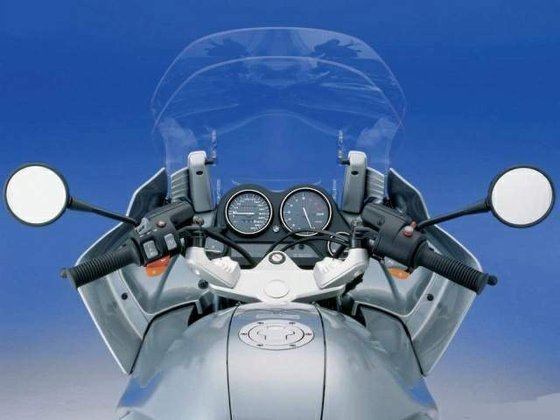
Design & Aesthetics
The K 1200 GT’s styling is quintessentially early-2000s BMW—functional yet understated. The full fairing channels airflow efficiently, and the body-colored handguards add a touch of sophistication. White turn signals and a streamlined tail section give the bike a clean, timeless profile.
While not as angular as modern sport tourers, the GT’s design prioritizes aerodynamics. The dual-headlight setup remains iconic, and the analog-digital instrument cluster (with a fuel gauge and gear indicator) is intuitive, if slightly dated by today’s TFT standards.
Competition
In its era, the K 1200 GT faced stiff rivalry from:
- Honda ST1300 Pan European: Honda’s V4 engine offered smoother low-end grunt, but the ST1300’s weight (291 kg / 642 lbs) and chain-driven design made it less agile.
- Yamaha FJR1300: The FJR’s 1,298 cc engine delivered comparable power, but its conventional suspension couldn’t match BMW’s Telelever/Paralever combo for stability.
- Triumph Sprint ST: Lighter and sportier, the Sprint excelled in twisties but lacked the GT’s touring amenities and shaft-drive reliability.
The BMW’s standout features—shaft drive, adjustable suspension, and superior wind protection—gave it an edge for riders prioritizing long-haul comfort over outright sportiness. Today, these traits make it a compelling used-buy alternative to newer, pricier models.
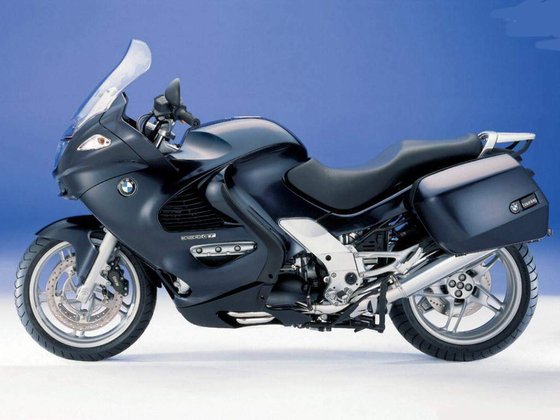
Maintenance
Owning a K 1200 GT requires diligence, but its mechanical simplicity (by modern standards) eases upkeep:
- Engine Oil: Use SAE 15W-50 (3.75L with filter). Change every 10,000 km (6,200 mi).
- Valve Adjustments: Check every 20,000 km (12,400 mi). Intake valves: 0.15–0.20 mm, exhaust: 0.25–0.30 mm (cold).
- Spark Plugs: Replace NGK DCPR7E/DCPR7EIX every 15,000 km (9,300 mi). Gap: 0.8 mm.
- Tires: Maintain 2.5 bar (36 psi) front/rear for solo riding. Increase to 2.9 bar (42 psi) when loaded.
- Shaft Drive: Inspect seals and lubricate every 30,000 km (18,600 mi).
Common wear items include the hydraulic clutch seals and brake caliper pins. Upgrading to sintered brake pads (available at MOTOPARTS.store) enhances stopping power, while a 75W-140 GL-5 gear oil swap smooths shifts.
Verdict
The BMW K 1200 GT is a testament to the adage “they don’t make them like they used to.” Its blend of engineering pragmatism and touring comfort ensures it remains relevant decades after its debut. For riders seeking a capable, low-maintenance sport tourer with character, the GT is a worthy investment—and with MOTOPARTS.store’s extensive catalog of OEM and aftermarket components, keeping it road-ready is simpler than ever.
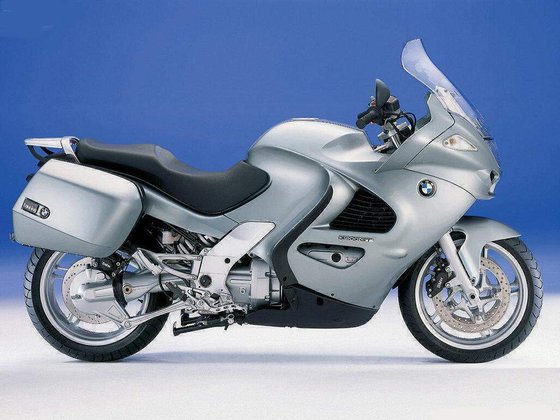





Specifications sheet
| Engine | |
|---|---|
| Stroke: | Four-stroke |
| Ignition: | Bosch Motronic |
| Max power: | 96 kW | 129.0 hp |
| Max torque: | 117 Nm |
| Fuel system: | Electronic intake pipe injection (Bosch Motronic MA 2.4) |
| Max power @: | 8750 rpm |
| Displacement: | 1171 ccm |
| Max torque @: | 6750 rpm |
| Bore x Stroke: | 70.5 x 75 mm (2.8 x 3.0 in) |
| Configuration: | Inline |
| Cooling System: | Liquid cooled |
| Compression ratio: | 11.5:1 |
| Number of cylinders: | 4 |
| Dimensions | |
|---|---|
| Wheelbase: | 1555 mm (61.2 in) |
| Dry weight: | 281 |
| Wet weight: | 300 |
| Seat height: | 785-820 mm (30.9-32.3 in) |
| Overall width: | 920 mm (36.2 in) |
| Overall height: | 1340 mm (52.8 in) |
| Overall length: | 2260 mm (89.0 in) |
| Ground clearance: | 165 mm (6.5 in) |
| Fuel tank capacity: | 20.5 L (5.4 US gal) |
| Drivetrain | |
|---|---|
| Clutch: | Single-disc dry clutch, hydraulically operated |
| Gear Ratio: | 1st 2.045 / 2nd 1.600 / 3rd 1.267 / 4th 1.038 / 5th 0.900 / 6th 0.820:1 |
| Final drive: | shaft |
| Transmission: | 6-speed |
| Maintenance | |
|---|---|
| Rear tire: | 180/55 z-17 |
| Engine oil: | 15W50 |
| Front tire: | 120/70 z-17 |
| Break fluid: | DOT 4 |
| Gearbox oil: | 600 ml 75W-140 GL-5 |
| Spark plugs: | NGK DCPR7E or NGK DCPR7EIX |
| Spark plug gap: | 0.8 |
| Final drive oil: | 230 ml 75W-140 GL-5 |
| Coolant capacity: | 1.9 |
| Forks oil capacity: | 1.02 |
| Engine oil capacity: | 3.75 |
| Engine oil change interval: | Every 5000 km or 2 years |
| Valve clearance (intake, cold): | 0.15–0.20 mm |
| Valve clearance check interval: | 24,000 km / 15,000 mi |
| Valve clearance (exhaust, cold): | 0.25–0.30 mm |
| Recommended tire pressure (rear): | 2.5 bar (36 psi), 2.9 bar (42 psi) with load |
| Recommended tire pressure (front): | 2.5 bar (36 psi), 2.9 bar (42 psi) with load |
| Additional Features | |
|---|---|
| Idle Speed: | 900 ± 150 RPM |
| Standard Equipment: | ['BMW Integral ABS II', 'Electrically adjustable windshield', 'Heated grips (optional)', 'Cruise control (optional)', 'Color-matched hard cases'] |
| Chassis and Suspension | |
|---|---|
| Frame: | Bridging frame of die-cast aluminum with vibration-decoupled engine |
| Rear brakes: | Single 285 mm disc, 2-piston caliper (ABS standard) |
| Front brakes: | 2 x 320 mm discs, 4-piston calipers (ABS standard) |
| Rear suspension: | Paralever single-sided swingarm, adjustable spring preload and rebound damping |
| Front suspension: | Telelever, 35 mm stanchion diameter, central strut |
| Rear wheel travel: | 135 mm (5.3 in) |
| Front wheel travel: | 115 mm (4.5 in) |



